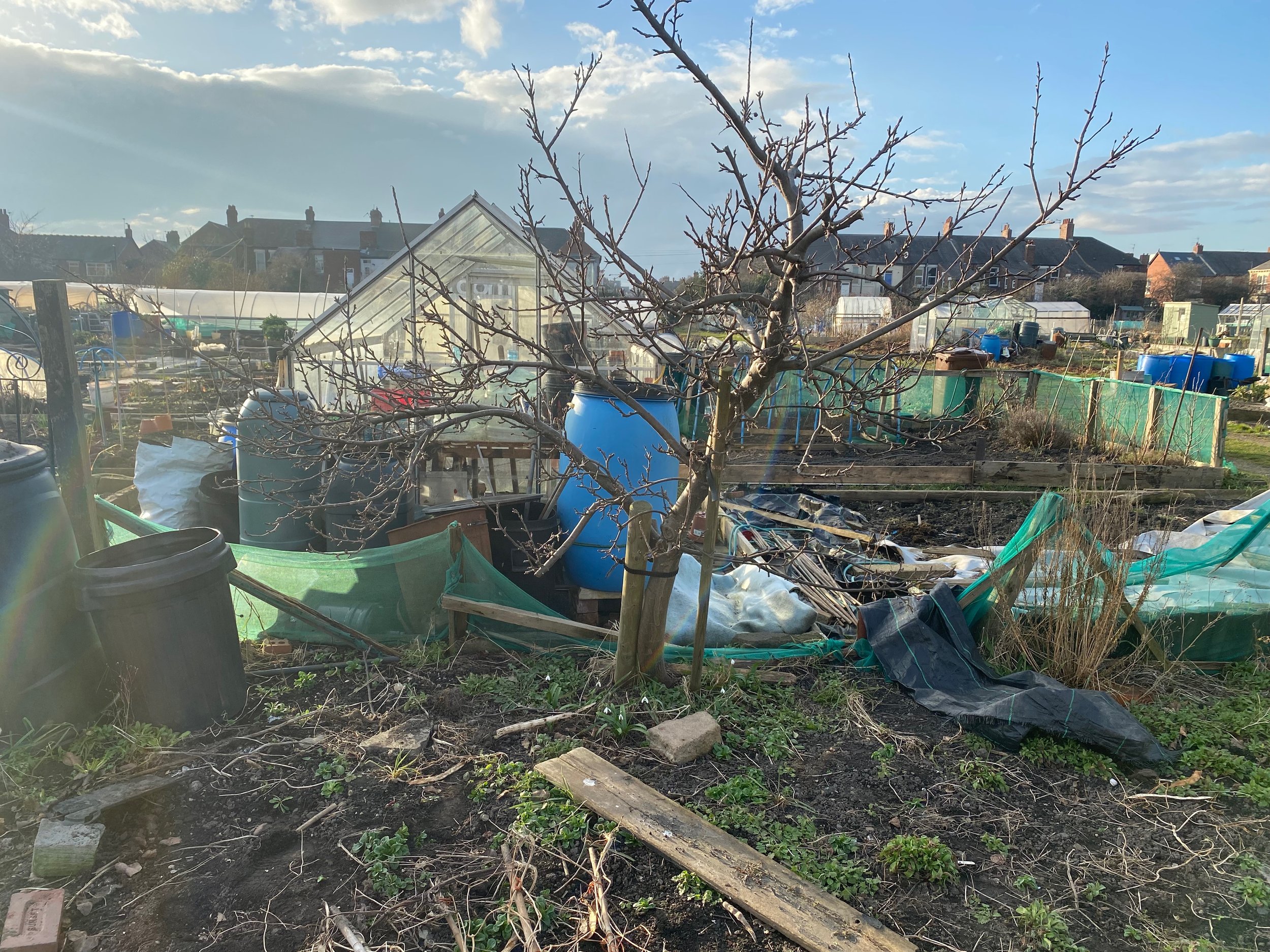Planning a forest garden at the allotment
I share an allotment with friends, and even with 3 adults and occasional help from the children it’s still a lot to manage. So this year I suggested we turn a small part of it into a foragers forest garden around one of the established apple trees to reduce maintenance. Forest gardens combine fruit and nut trees, shrubs, herbs, climbers and perennial vegetables to create low maintenance food production ecosystems. It’s also a more ecological way of growing with lower carbon footprint than growing annuals.
The area is partly shady and at the moment not very productive. I plan to plant a selection of perennial edible plants, plants for pollinators and groundcover to reduce maintenance and increase productivity, biodiversity and soil fertility.
I am basing plant choices on the idea of a Permaculture Guild. Rather than growing crops in traditional rows, a guild is a polyculture of many different plants grown together each providing to the overall health and productivity of the group. It’s a selection of plants that work together, at worst not inhibit each other's growth by competing for resources and at best creating a network of mutually beneficial relationships. The principle of the whole is more than the sum of its parts.
Each plant fulfils one, or more often more than one, role from attracting pollinators, repelling pests, pulling nutrients from deep in the soil, being edible, fixing nitrogen and groundcover.
I will take into account the sunny side and a shady side to the patch and add plants accordingly. Including taller plants and shorter plants and a variety of flower shapes. More to come on plants I’m considering in a future blog post.
This part of the allotment is a bit shady and unproductive, we have plans to turn it into a productive foragers forest garden.

